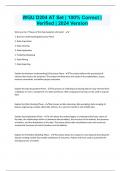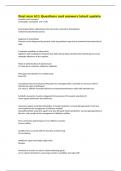Samenvatting
Summary Genetics, Ecology & Evolution - Biology year 1
- Instelling
- Rijksuniversiteit Groningen (RuG)
- Boek
- Biology
This summary is for the first year course of Biology at Rijksuniversiteit Groningen: Genetics, Ecology and Evolution.
[Meer zien]














